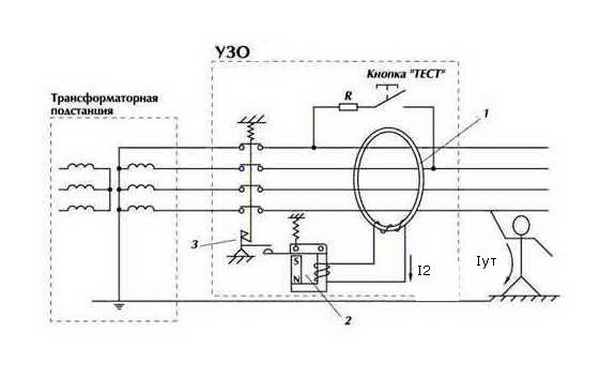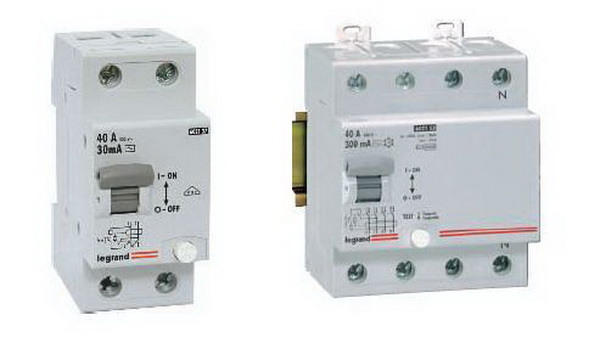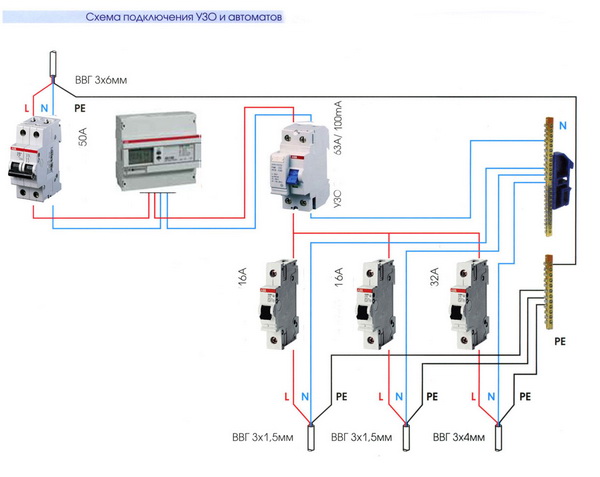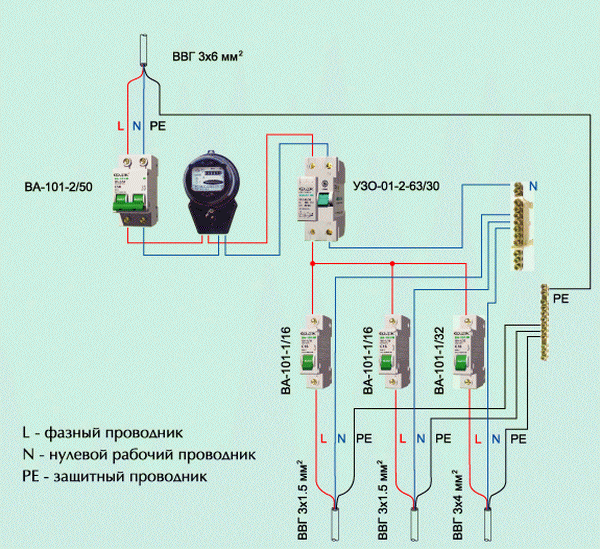RCD in any electrical circuit is a very important element. The main purpose of the RCD is to protect a person from electric shock when in contact with live parts. In addition, the RCD, the principle of operation of which will be discussed in this article, prevents the likelihood of fires that can be triggered by the ignition of electrical wiring.
In certain situations, the RCD, the principle of operation of which is quite simple, stops supplying voltage to the protected line. This happens if a person touches the current-carrying parts of electrical installations, and non-current-carrying elements, which, as a result of insulation breakdown, are energized. Another reason for opening contacts is the occurrence of current leakage to the electrical installation case or ground.

Consideration of the principle of operation of the RCD in general and on a specific example
RCD (the principle of operation is based on the detection of incoming and outgoing currents at the entrance to the system) can respond to minimal leakage and perform its protective function. To measure the leakage, a sensing element such as a differential transformer with three windings is installed in the device.
The principle of operation of the RCD can be easily understood with a specific example. If a person touches the live parts of the installation, or an insulation breakdown occurs on its case, the amount of current flowing through the phase wire will exceed the current in the neutral wire.
The total (final) flux of magnetic induction, in this case, will necessarily change, will differ from zero and will be the cause of current induction in the control winding. The relay to which the winding is connected will operate and the release of the contacts of the power protective device will be set in motion.
As a result of which a dangerous electrical installation is de-energized in a fraction of a second, it ensures the safety of human health.

Connecting an RCD to a single-phase network: basic rules
The RCD diagram is indicated on the body of the device and allows you to understand the principle of its operation, correctly connect the device to the protection circuit of the electrical circuit, avoiding incorrect operation of the device or its failure.
The RCD circuit, according to which it is connected to the power supply system, depends on various parameters and factors. In residential premises, as a rule, a single-phase version of electrical wiring with a rated voltage of 220 V is used.
Before installation, you need not only to understand the principle of operation of the RCD in a single-phase network, but also to familiarize yourself with the safety rules.

The principle of operation of the RCD and the wiring diagram imply the use of two wires of wiring connected to the input terminals, and two wires to the output of the device, connected to the corresponding output terminals. Install the device only when the power is off. Before installation, you need to make sure that there is enough space in the shield for the selected device.
And the wiring diagram is quite simple. There are several options for installing this device, but the principle, in general, remains unchanged.
The most common and affordable is the option in which the device is at the entrance to the house / apartment. The disadvantage of this option is that when the device is triggered, the entire living space is de-energized, and it is difficult to determine the cause of what is happening.

More expensive, however, very convenient is the connection option with the installation of several RCDs - in this case, each device will be responsible for a separate group of sockets or lighting.
More on this topic on our website:
-
- Despite the emergence of modern building materials with high technical characteristics, some owners of private houses choose water heating from a wood-burning stove, rather than modern solid fuel ...
-
- Modern houses and apartments use electrical wiring with a separate protective conductor, but there is no grounding in old Soviet buildings. It's important to know how to...
-
- To understand how the RCD and the machine are connected, the diagram of which is presented on our website, you first need to figure out what the functional purpose of both of these devices is ....
-
- The main difference between a balcony and a loggia is that a balcony is a hinged structure that is attached to the wall. But the loggia is located directly in the structure of the building, ...
